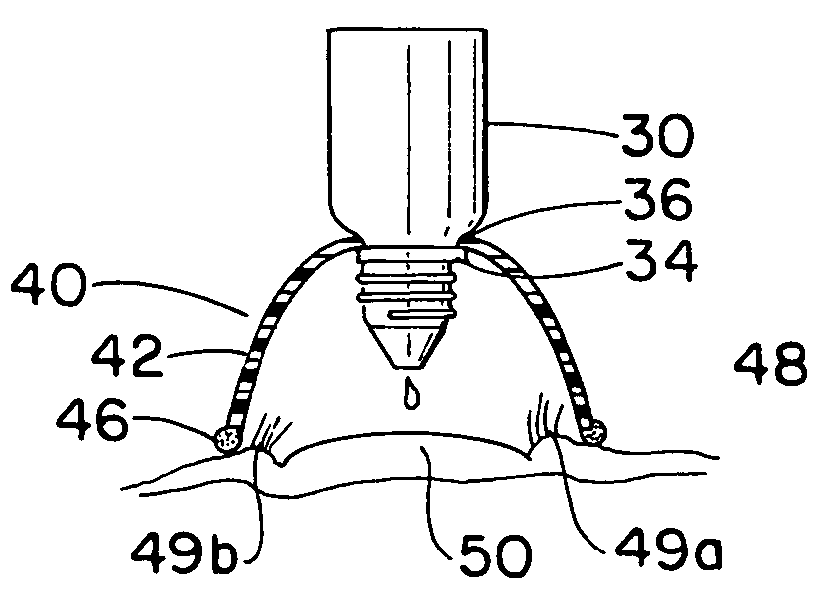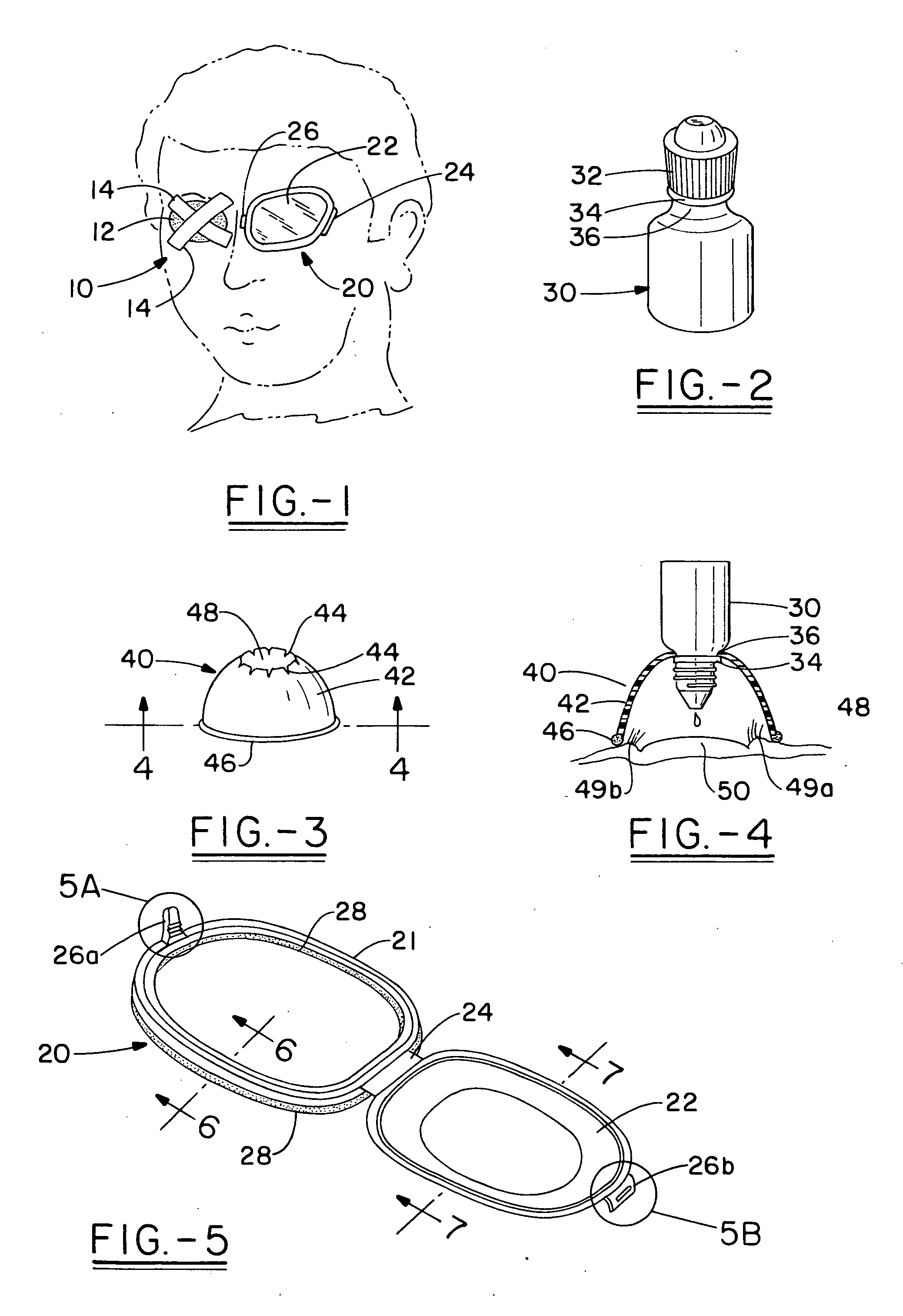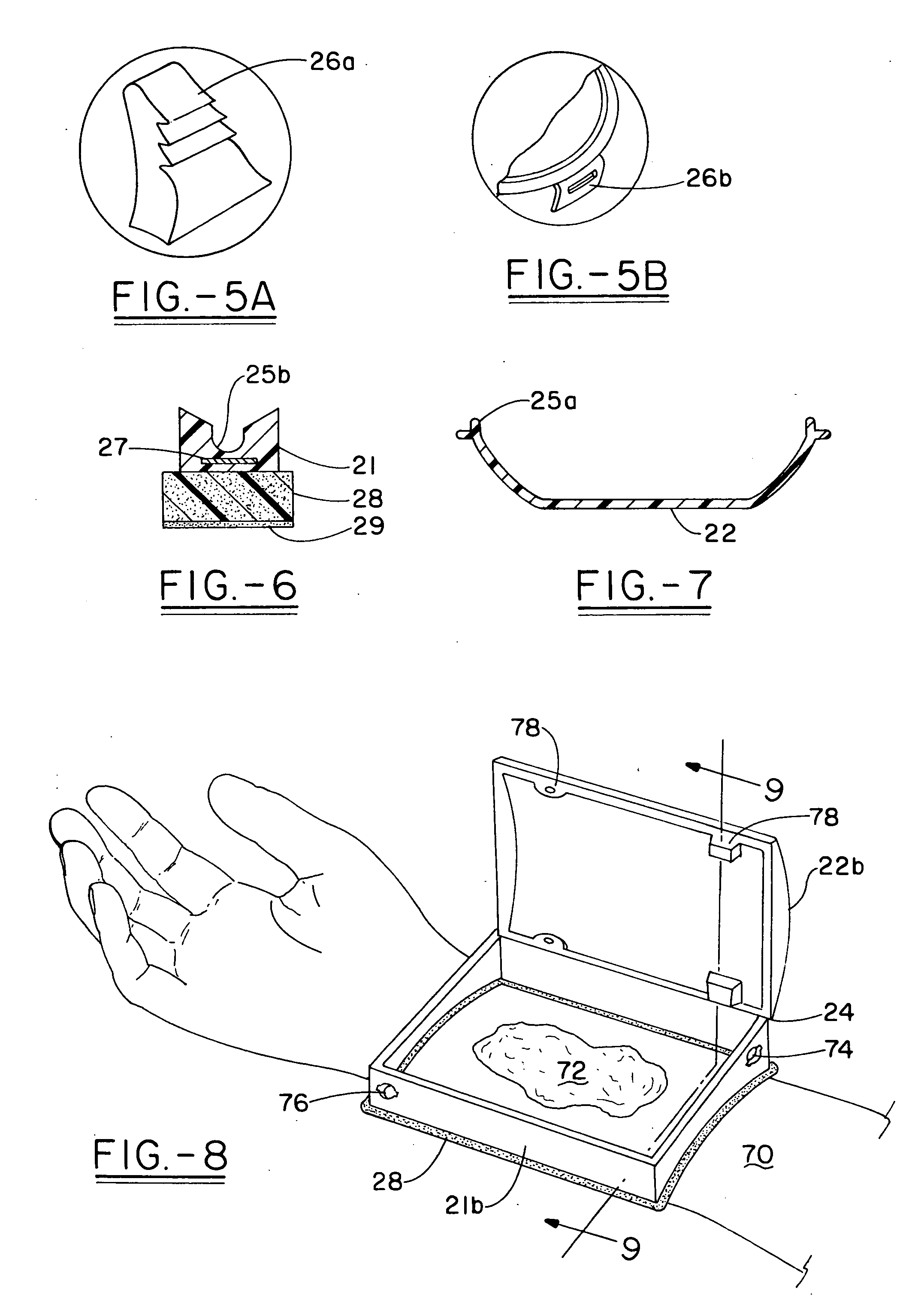Wound protection and therapy system
a wound protection and therapy system technology, applied in the field of wound protection and therapy system, can solve the problems of increasing the number of surgical operations and their complexity, discomfort to the point of pain, and partial or total loss of vision, so as to improve the circulation and drainage to the wound area, eliminate the need for dressing and dressing changes, and relieve the focal pressure on the wound
- Summary
- Abstract
- Description
- Claims
- Application Information
AI Technical Summary
Benefits of technology
Problems solved by technology
Method used
Image
Examples
Embodiment Construction
[0048]FIG. 1 shows an individual wearing two types of compression-resistant eye dressing. Over the right eye is the standard currently available dressing 10 comprising a rigid aluminum or plastic disc 12 with multiple fenestrations. Pieces of adhesive tape 14 are used to hold the disc in place and must be removed each time eye medication needs to be delivered, typically three to four times each day. Once the adhesive tape is pulled off, it does not stick again adequately and typically has to be replaced after each use. Over the course of a 7 to 10-day therapy period, the removal and reapplication of the tape 20 to 40 times results in considerable skin irritation and adhesive residue build-up. Furthermore, the current eye dressing does not protect the eye against wetness and does not allow the patient to shower or shampoo the hair during the course of treatment.
[0049] Over the left eye is shown one embodiment of this invention in the form of an eye dressing chamber 20. A lid or cove...
PUM
 Login to View More
Login to View More Abstract
Description
Claims
Application Information
 Login to View More
Login to View More - R&D
- Intellectual Property
- Life Sciences
- Materials
- Tech Scout
- Unparalleled Data Quality
- Higher Quality Content
- 60% Fewer Hallucinations
Browse by: Latest US Patents, China's latest patents, Technical Efficacy Thesaurus, Application Domain, Technology Topic, Popular Technical Reports.
© 2025 PatSnap. All rights reserved.Legal|Privacy policy|Modern Slavery Act Transparency Statement|Sitemap|About US| Contact US: help@patsnap.com



